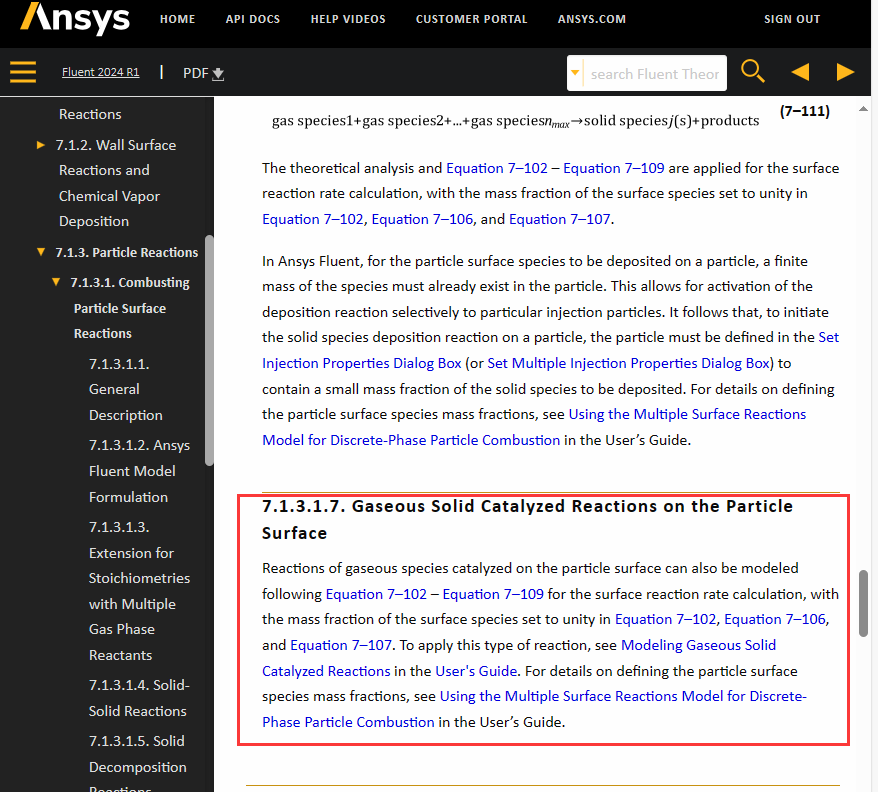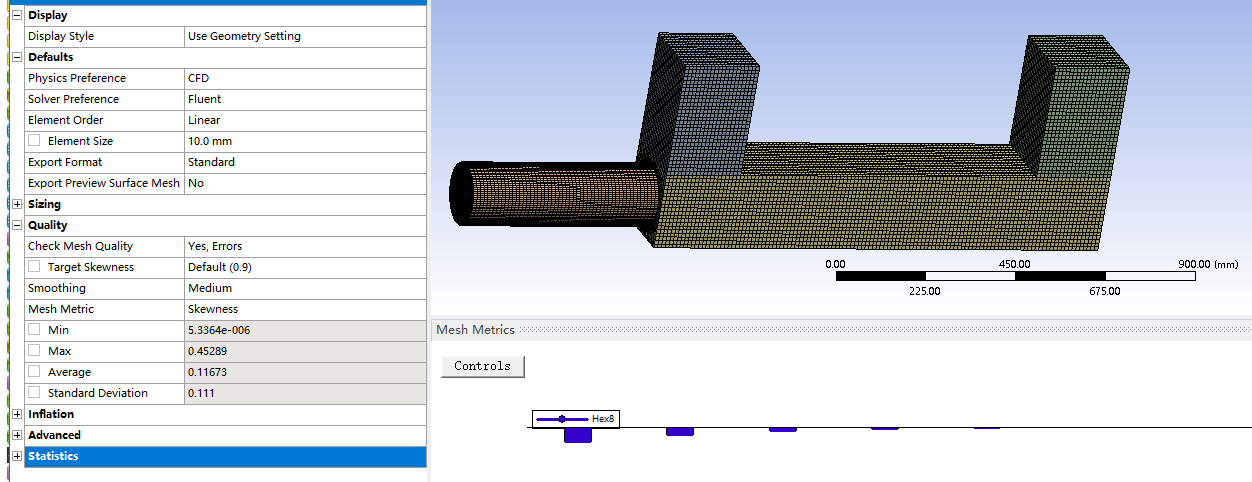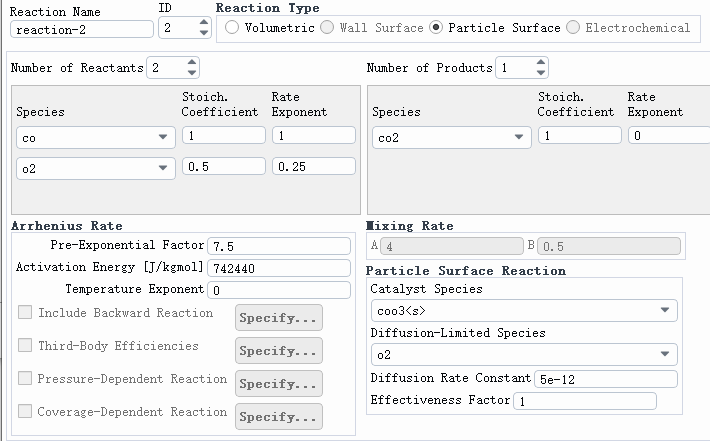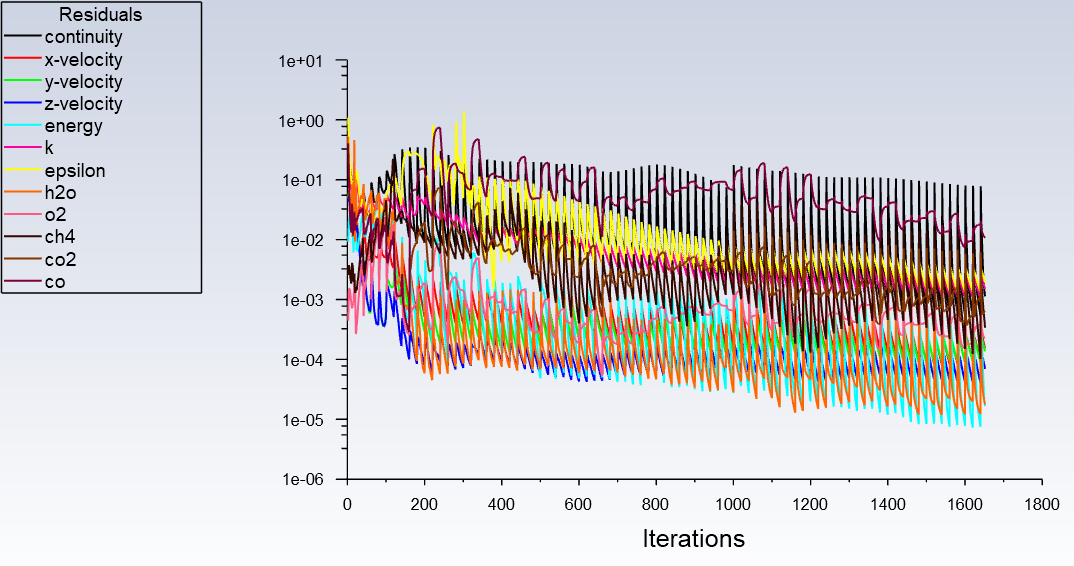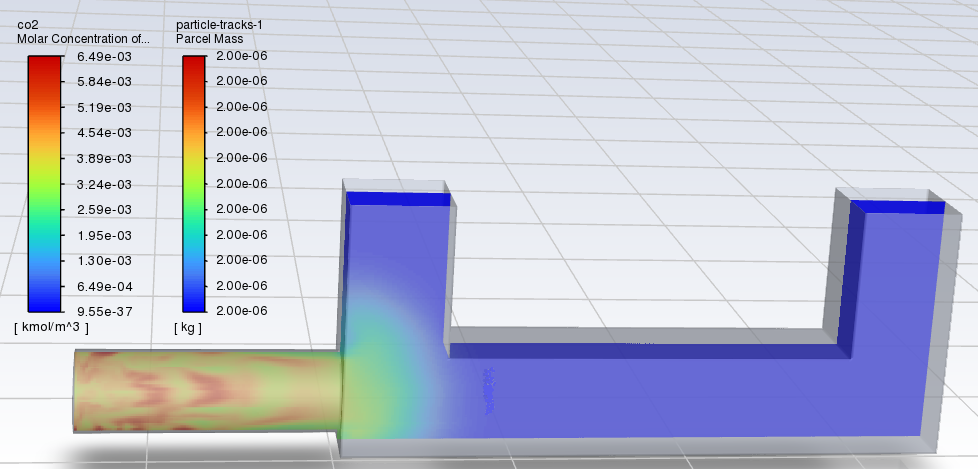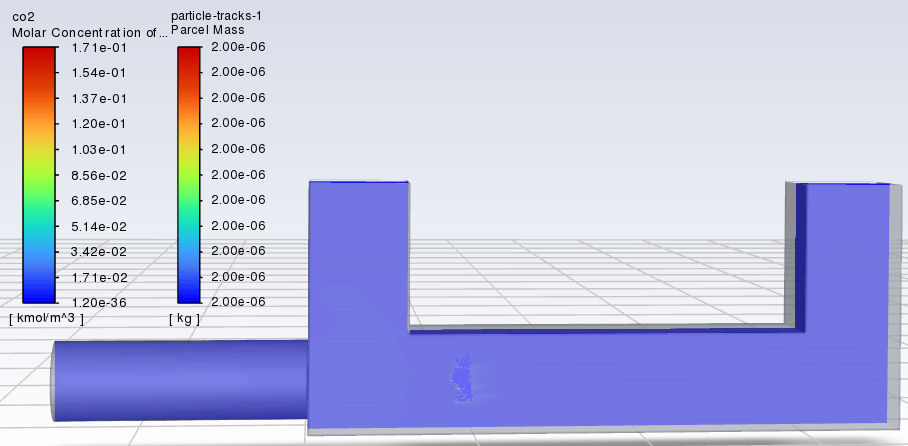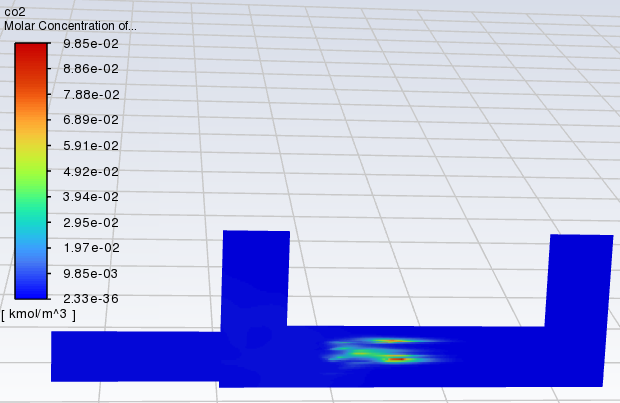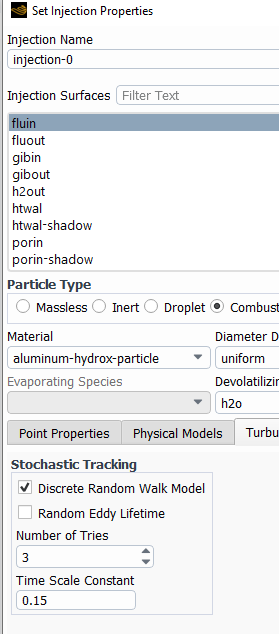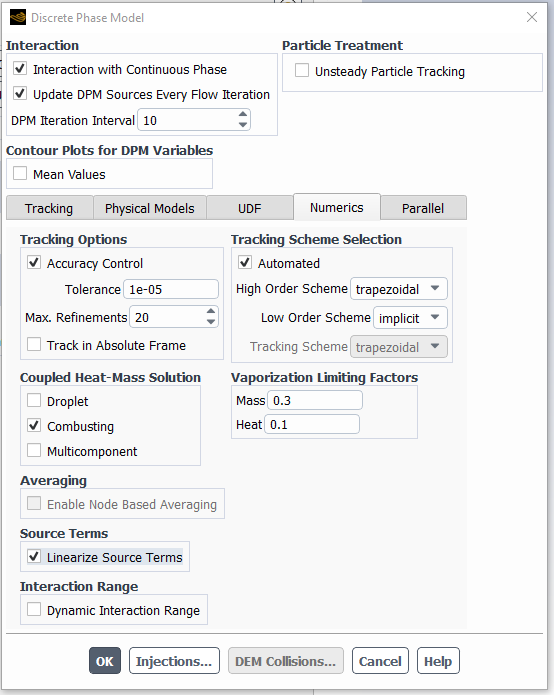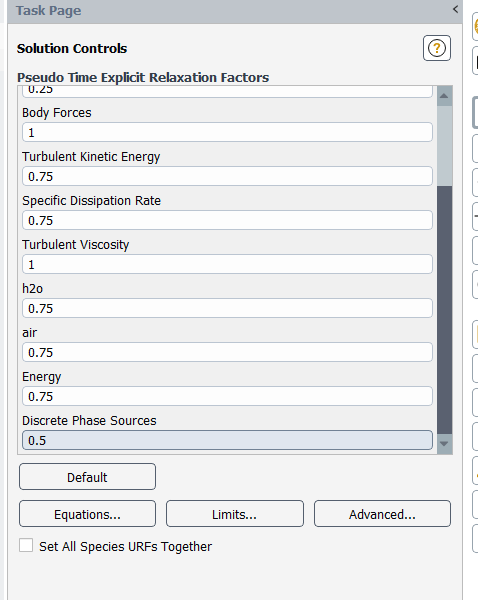-
-
March 26, 2024 at 11:05 am
Diri Li
SubscriberI want to simulate a particle surface reaction, but the result is not completely convergent. When gas comes into contact with particles, CO2 suddenly increases by 10-100 times, which seems to contradict the law of conservation of mass. In addition, the more CO2 there is in an area, the less N2 there is. Increasing the number of grids and shortening the time step is still the result. Did I make a mistake in setting it up? Or is Fluent unable to simulate this catalytic reaction? I consulted the ANSYA theoretical manual, which provides an introduction to this reaction. These are some of my pictures. ( time step is 0.0001s)
Thank you for any help.
-
April 11, 2024 at 4:47 pm
jcooper
Ansys EmployeeHI Diri:
None of what you describe seems unphysical, CO2 is a product and will evolve from the particle surface as particles come into contact with O2. N2 molar concentration will go down in the areas where CO2 is produced (because the mass fractions all have to add to 1).
What you can get is an overproduction of CO2 due to numerics. This is related to the fact that particle solution is staggered from the fluids solution, so particle reactions happen on an outdated fluid solution field. If you are getting this type of overshoot, the oxygen will in the areas of high CO2 will be at or near 0.
The remedy for this is to inject particle more frequently (every 2 fluid calculations), and also inhject more particles (by turning on turbulent dispersion). This will calculate more trahectories and the particle sources will be spread over a larger area. Turbulent dispersion is activated under each injection. The number of tries is the multiplier for the number of trajectories.
Other things to try are to turn on particle source linearization Under Discrete phase model Numerics tab:
...and underrelax the particle sources too - you can set this parameter as low as 0.1
(I would also ensure that species URFs and discretizations are set together, both on this form and under Methods. This ensures that all species equations get the same numerical treatment.)
I hope this helps.
Best Regards,
Judy
-
- The topic ‘Particle surface reaction’ is closed to new replies.


- JACOBI Convergence Issue in ANSYS AQWA
- Is it able to solve turbomachinery using density-based solver in Fluent?
- Two-way FSI simulation
- Ensight Force_per_unit area_EV
- RIBBON WINDOW DISAPPEARED
- Fluent Meshing Error when .dsco not .stp
- Ansys Fluent for modelling Ocean Wave reactions to Wave Barriers
- Battery Pack cooling
- ISAT ABORT error
- UNASSIGNED INTERFACE ZONE DETECTED FOR INTERFACE…

-
4597
-
1495
-
1386
-
1209
-
1021

© 2025 Copyright ANSYS, Inc. All rights reserved.

